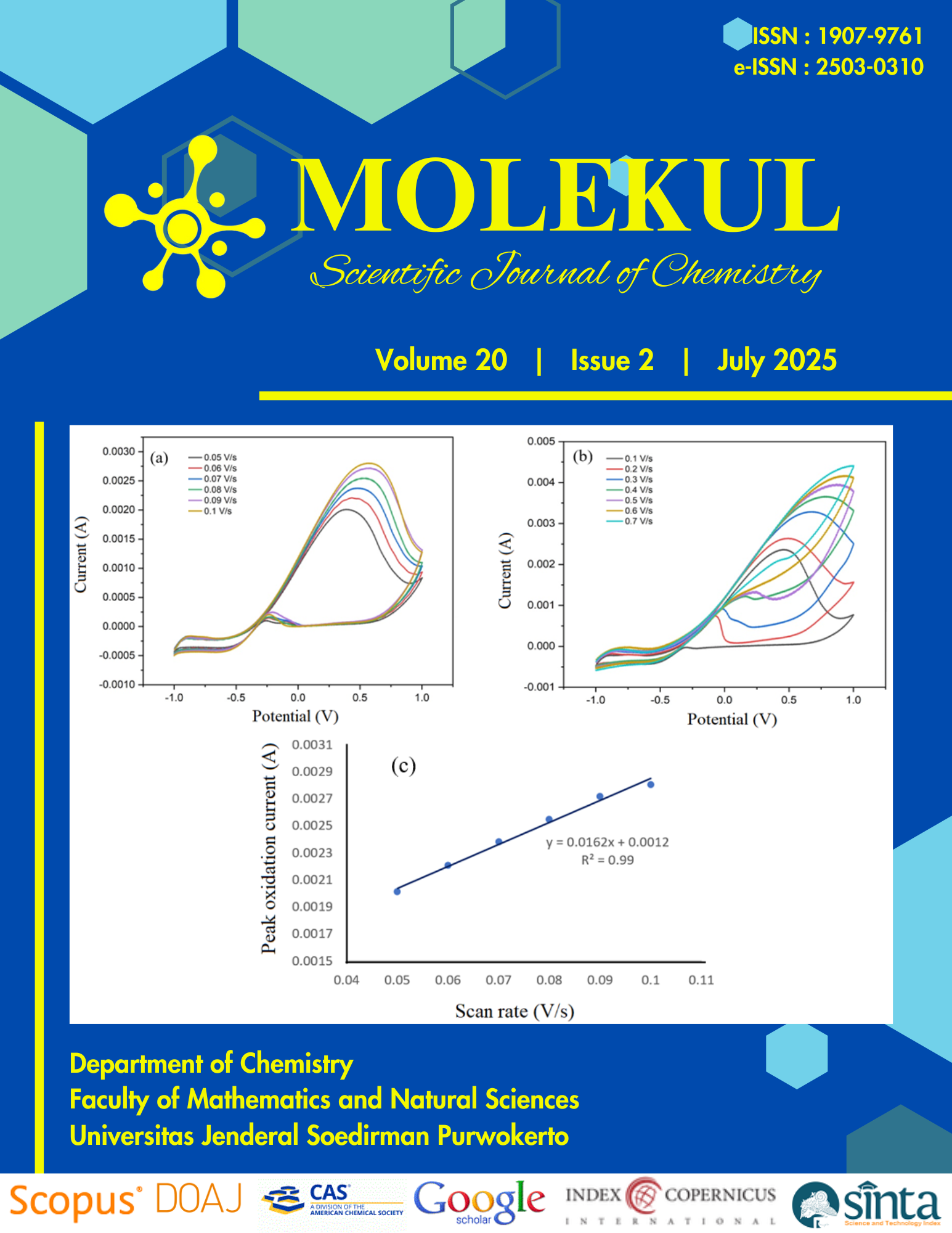Chemical Constituents from Indonesian Dysoxylum parasiticum (Osbeck). Kosterm and Their Cytotoxicity Against MCF-7 Breast Cancer Cells
Abstract
ABSTRACT. The exploration of naturally occurring secondary metabolites from plants, which serve as direct sources or precursors for new drug development, motivates us to conduct a comprehensive investigation into their presence. Indonesia stands out as a global biodiversity hotspot, boasting a significant number of endemic species that offer a rich reservoir of untapped resources for pharmaceutical, agricultural, and environmental uses. The Dysoxylum genus, belonging to the Meliaceae family, is recognized as a vital source of secondary metabolites and is well-known for its traditional medicinal applications. Consequently, we focus on analyzing the chemical constituents found in the stem bark of one Indonesian Dysoxylum species, specifically D. parasiticum (Osbeck) Kosterm., and assess their biological activity as anticytotoxic agents. Our research identified three known compounds: a tirucallane-type triterpenoid, cneorin-NP36 (1), a seco-limonoid from the preurianin group, amotsangin A (2), and an ergostane-type steroid, 22(E)-ergosta-6,22-dien-3β,5α,8α-triol (3). The biological evaluation against the human breast cancer cell line MCF-7 revealed that compound 2 exhibited a notable inhibitory effect, with an IC50 value of 34.5 μM. The existence of a highly oxidized structure in compound 2, due to its ester substituents, highlights its effectiveness in inhibiting cancer cell proliferation, outperforming the reference drug cisplatin, which has an IC50 of 53.0 μM. These findings indicate that amotsangin A (2) is a promising anticancer agent, particularly in the treatment of breast cancer. Further studies, including in silico analysis and structural modification, are needed to enhance its cytotoxic activity and selectivity.
Keywords: Cytotoxic activity, Dysoxylum parasiticum, MCF-7, seco-limonoid amotsangin A, Secondary metabolites
Authors agree with the statements below:
- Authors automatically transfer the copyright to the MOLEKUL journal and grant the journal right of first publication with the work simultaneously licensed under a Creative Commons Attribution 4.0 International License (CC BY 4.0).
- Authors are able to enter into separate permission for the non-exclusive distribution of the journal's published version of the work (e.g., post it to an institutional repository or publish it in a book), with an acknowledgment of its initial publication in this journal.













